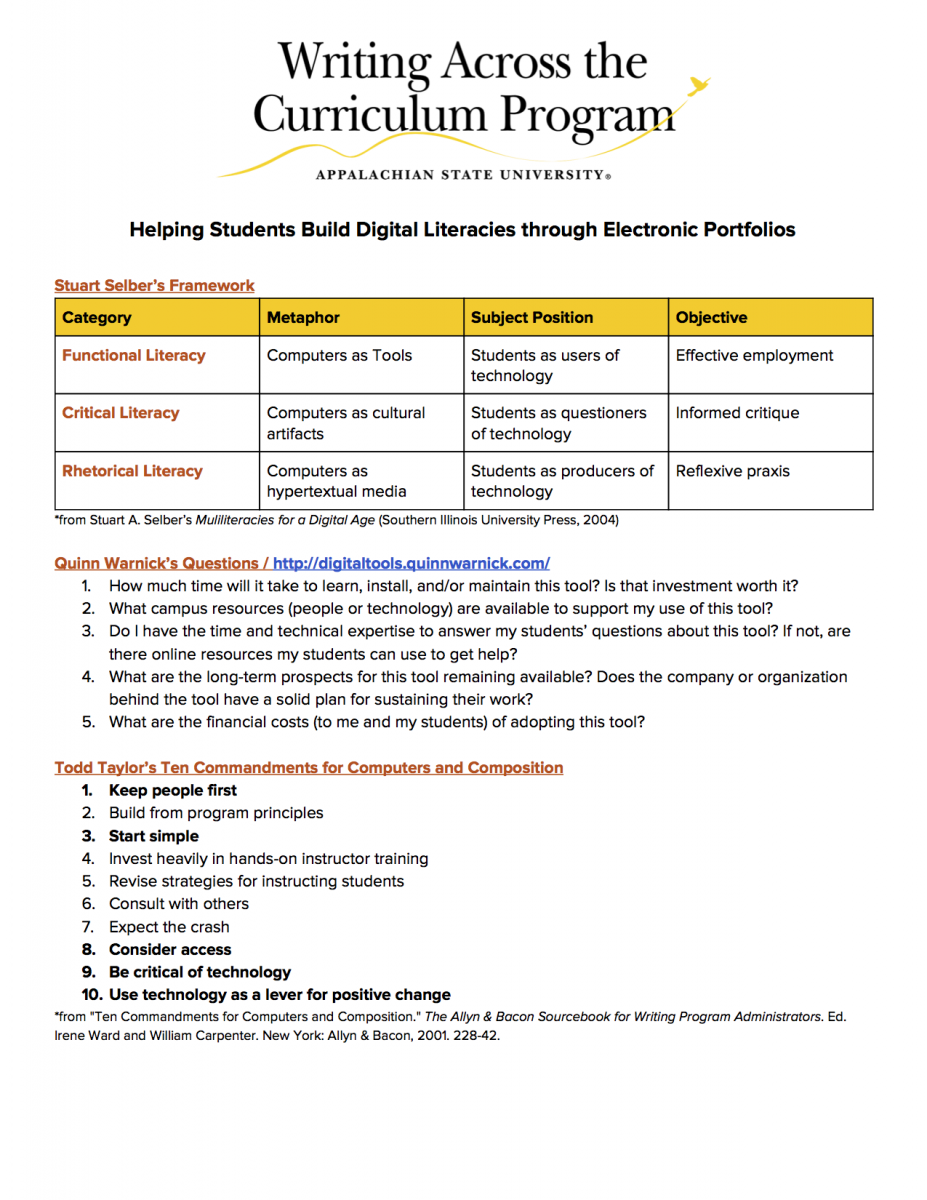Even prior to being added to AAC&U's list of 11 High-Impact Practices that support an integrative higher education experience for students, many disciplines realized the tremendous value of ePortfolios to help students collect, reflect on, and transfer their knowledge and skills across a variety of contexts. WAC supports the use of ePortfolios and the practice of metacognition through reflection across the vertical writing curriculum by offering resources and professional development opportunities for faculty. We also use ePortfolios to assess writing across the University. Explore our resources below to learn more about using ePortfolios to support student learning, contact us for an individual consultation or group workshop about incorporating ePortfolios into your curriculum, or visit the APortfolio website for specific tutorials related to AppState's instance of Digication.
What is an ePortfolio?
An ePortfolio is an academic website where students collect and reflect on their learning. The ultimate goal of a student's ePortfolio is to intentionally document learning and to design a positive digital presence for a professional audience. At Appalachian State University, our students and faculty use ePortfolios for multiple purposes in the context of a class, program, major, research project, international experience, or career search. Watch this video to learn more about how AppState students use Digication ePortfolios (APortfolios).
Why Use ePortfolios?
ePortfolio Pedagogy
The following are characteristics of ePortfolio pedagogy:
Effective ePortfolio pedagogy engages students in active learning by requiring them to go through the process of evaluating, revising, presenting, and reflecting on their best work after considering audience, context, and purpose. In order to create successful ePortfolios, students must apply their rhetorical knowledge to represent an emerging disciplinary awareness.
Process writing includes invention (writing to learn, exploring ideas, talking it out), drafting (organization concerns, attention to assignment and format, modeling by teacher), revision (audience and purpose concerns, conventions of discourse community, peer review and workshops), and editing (correctness and concerns of style of discourse community, group workshops). ePortfolios enable students to collect, organize, showcase, and reflect on their writing process, which helps them to see and identify successes and areas of struggle.
Reflection is the practice that connects learning across the various artifacts in an ePortfolio and supports the transfer of students' knowledge from one genre or situation to another. It is how students determine what they know, what they don't know, and what their next steps should be.
Ulimately, all of the above characteristics contribute to making ePortfolios a student-centered form and practice by shifting the authority from the teacher to the student and situating students as the arbiters of their own learning.
WAC is in the process of creating additional resources for ePortfolio pedagogy. Please explore our current collection of resources below. If you'd like to offer any recommendations or suggestions or schedule a one-on-one consultation, contact Miles Britton.
Reflection
WAC has collected a variety of resources regarding writing and reflective practice, shared here as Google Docs. For sample reflective assignments, please visit our sample assignments pages for WAC and WID.
- An Introduction to Reflection [Google Doc]
- Reflection FAQ [Google Doc]
- Reflection in Third-Year WID Courses and Capstones [Google Doc]
- ePortfolios as a Reflective Tool [Google Doc]
ePortfolio Tools
Access the full handout [Google Doc]
